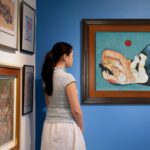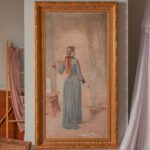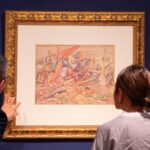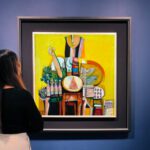For most Filipinos, the ancestral home is almost always a familiar sight every summer. It is the place where cherished memories are made: of leisurely afternoons spent catching up with cousins or enjoying refreshing drinks in the heat. Time seems to stand still within its walls, offering respite from the hustle and bustle of everyday life. It is the lumang bahay, frozen in time, and the reminders of its age are the objects that it keeps – tangible mementoes of gracious living spent within its four corners.
Every lumang bahay is a precious repository of memories. And while a memory is unique to each home, there is still an uncanny similarity in the collective Filipino experience depicted by objects in the ancestral home.
Lolo’s hardwood furniture. These are the fixtures that are often taken for granted because they have always been there—the large antique furniture, such as the four-poster beds, sala set, grand tables, and cabinets. Each piece exudes a sense of wonder.
Paintings in the kitchen. There’s often an unassuming painting that appears to have blended into the walls over the many years it has hung in the ancestral home. However, upon closer inspection, its true value and beauty may be revealed. Take a closer look at the framed artworks hanging on your wall; they may be masterpieces waiting to be rediscovered.
(Left Top) Mauro Malang Santos, ‘Plants,’ gouache; (left bottom) Romulo Olazo, ‘Untitled (Green Landscape),’ oil on canvas; (right) Nena Saguil, ‘Untitled,’ mixed media on canvas; round side table with marble top; a pair of inlaid Arts & Crafts narra tub chair; a 19th century San Roque de tallado bulto; a 19th century de tallado Theotokos
The sacred corners. In the Filipino home, the altar remains a constant presence. Be it a room or a perch atop a shelf, there is always a designated space for quiet prayer. Also in the Filipino home, the altar is not only the space to find sacred objects. Any flat top can be a dedicated space for religious objects.
(left to right) A 19th century ‘prinsesita’ aparador; 19th century wooden Christ on Cross; 1930s five-drawer Chippendale kneehole desk; 19th century wooden Crucified Christ with Mary Magdalene; San Antonio de Padua de tallado; 19th century wooden Crucified Christ; 1970s seven-tiered corner étagère; mid-century chest of drawers; 19th century wooden expirante Crucified Christ on Cross
(top left to right) 20th century framed relief of the Sacred Heart of Jesus; A 20th century framed ‘Nuestra Señora del Rosario’ oil painting on board; A framed metal relief of the ‘Inmaculada Concepcion;’ (bottom left to right) 19th century A de tallado ‘Santo Tomas de Villanueva;’ 1930s A Vigan settee with grape motif; A 19th century ‘Nuestra Señora de los Dolores’ icon; A 19th century de tallado ‘Santa Ana’
Dainty treasures. The beauty of ancestral homes can also be found in the nooks where objects have remained for so long. Some of these trinkets are kept hidden in shelves, while others have gathered dust on the mantle. And while they are brought out and moved from time to time, they go back to that space where they always seem to belong.
The ‘untouchable’ ceramics. These are the ‘special’ plates that rarely leave the safety of the cupboards, unless a guest is important enough to warrant their honor of use. They are meticulously stacked on display, and the younger generations avoid playing near them for fear of breaking not only the precious items but also their lola’s heart.
The Eclectic Aunt/Uncle’s Collection. Among the interesting finds in the lumang bahay are the not-so-occasional souvenir items that the globe-trotting relative leaves for display—be it an unlikely piece of indigenous object or an interesting piece of art. Regardless, these always become part of the home, as if they had always belonged there.
Left, on white wall) Jon Jaylo, ‘The Red Horse,’ oil on canvas; Michael Cacnio brass sculptures ‘Bird Vendor’ and ‘Kiteflier;’ 18th century ‘dinemonyo’ altar table; (blue wall) Untitled BenCab print; Reynard Borillo, ‘Untitled (Japanese Woman),’ oil on canvas; (foreground) blue and white jar; modern chair with Marilyn Monroe upholstery; cowhide rug
In the lumang bahay, items tend to accumulate more than they are discarded. It is truly a treasure trove of not just expensive objects but also valuable memories and stories.
The gavel&block art+design: big, bold, blue online auction takes place on Saturday, 6 May 2023 at 11am. View the online catalogue and register via this link.
Visit the in-person preview at Salcedo Auctions, NEX Tower, 6786 Ayala Avenue, Makati City. Preview begins on Thursday, 27 April, and will run until Friday, 5 May, from 9AM to 5PM daily except Sunday and Monday.



















